As we head into a new year and a new quarter, we must once again face the daunting challenge of buying another set of textbooks, and finding the most bang for your buck requires a little bit of extra research. The UCLA Store recently added a “price comparison feature” under its textbooks tab developed by the software company Verba, which specializes in implementing these tools for campus stores. Nevertheless, many students still turn to websites like Amazon, SlugBooks and Bigwords to buy or rent their books. I decided to test a few of these sites out, along with UCLA’s Free and For Sale Facebook group, in an effort to find the most affordable copy of my organic chemistry textbook, Vollhardt’s and Schore’s “Organic Chemistry: Structure and Function,” which retails at $281.50.
Amazon
Amazon was probably the most organized of the three websites that I tried. Not only did it list the new, used and rental prices in separate categories, but it also provided filters for the condition of the book. And for students with Amazon Prime, shipping would be much less of a hassle.
SlugBooks
SlugBooks provided a very clear form of price comparison as well, showing a supplier with the price they were offering directly below. It offered price comparisons for a combination of new and used books. What I liked the most about SlugBooks was that it gave a selling option to “put your book on the market” specifically for students from your school, along with just selling it on the website as a whole.
Bigwords
Bigwords was probably the most difficult for me to navigate out of the three. When I selected the “Buy” option, shown in the picture above, it redirected me to only one other site to complete my purchase, as opposed to showing all of the suppliers in an orderly fashion like SlugBooks. Nevertheless, Bigwords did provide several search-refining tools, such as “quality enforcer” and “I need my stuff by…” to make the process smoother, though I would have preferred to have all of my options laid out in front of me, like in other two websites, as opposed to only being able to see the buy with the cheapest total price.
Facebook (Free & For Sale)
Another method for buying your textbooks is to make a post in UCLA’s Free and For Sale group on Facebook. On one hand, the group makes it easier to connect with UCLA students only, many of whom usually sell used books for prices lower than those in the school store or even sites such as Amazon. The only disadvantage is that students are constantly posting new items for sale. When I advertised my need for my organic chemistry textbook, it was quickly replaced by an outpouring of new posts, and I still haven’t had any responses.
UCLA Store
Lastly, one can always turn to the UCLA Store website (accessible directly from my.ucla) and its in-house price comparison feature. In my case, the version of my textbook being sold by UCLA was a loose-leaf edition, so no alternative offers appeared. The prices that UCLA offers for new and used books are typically higher than the comparable options listed below.
Verdict
Even though the UCLA Store’s new price comparison feature streamlines the process of finding the most affordable versions of your textbooks, it doesn’t change the fact that the store’s prices are not. Many times its used textbooks cost more than the used books offered from other websites and sell out very quickly. Of the first three websites I tried, I found almost identical prices for buying and renting my organic chemistry textbook, and I found Amazon and SlugBooks to be more user-friendly than Bigwords. The best option, in my opinion, will always be to buy your books from a friend, ex-classmate or fellow UCLA student who has taken the class.

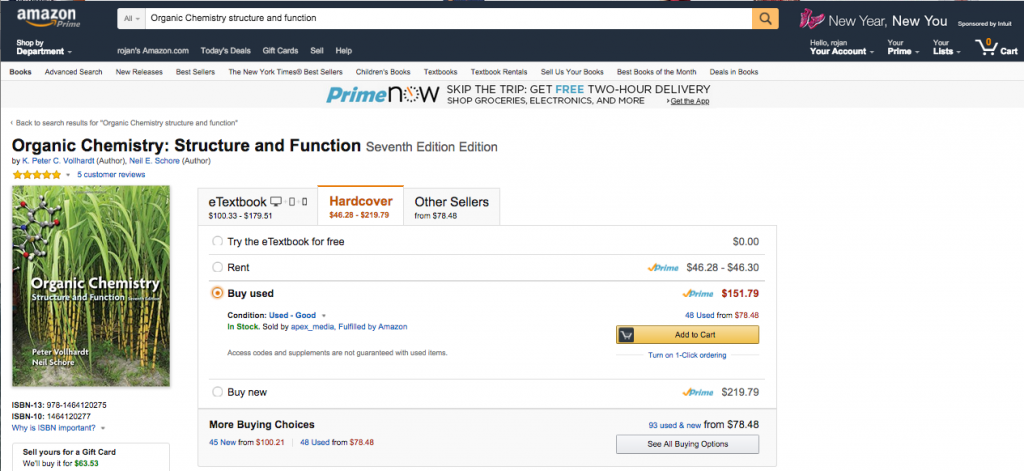
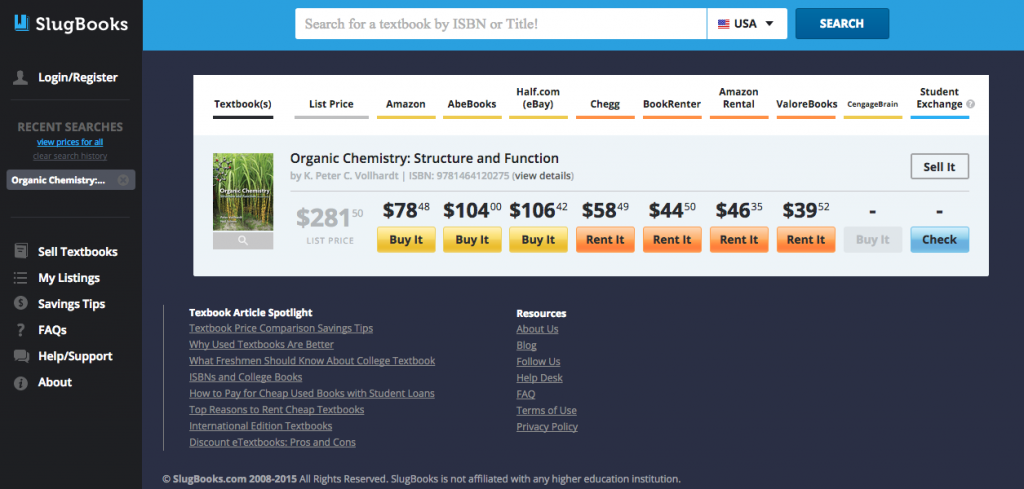
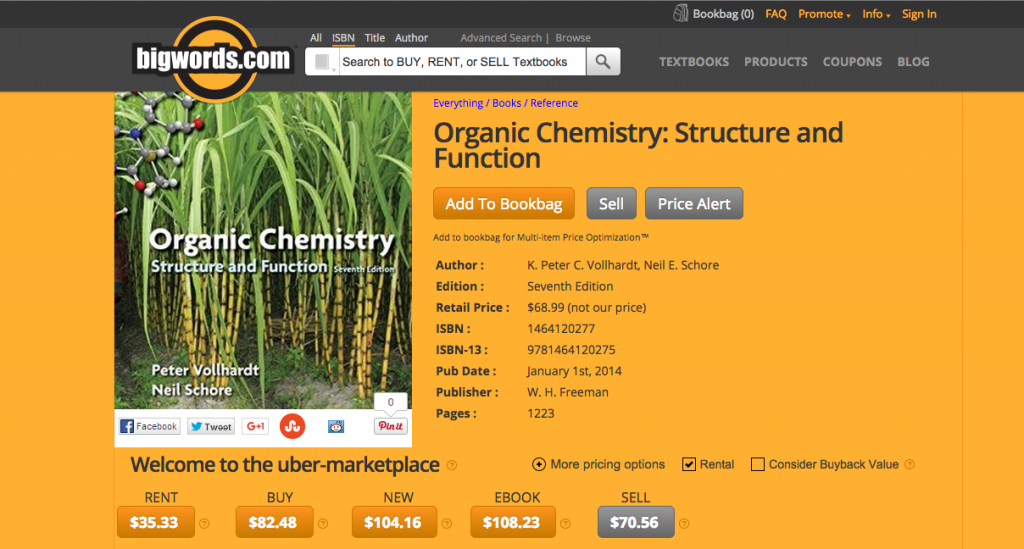
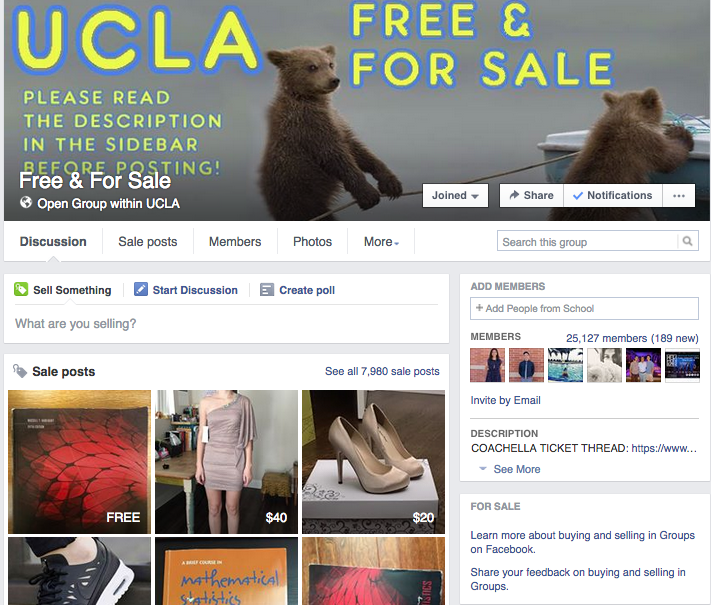
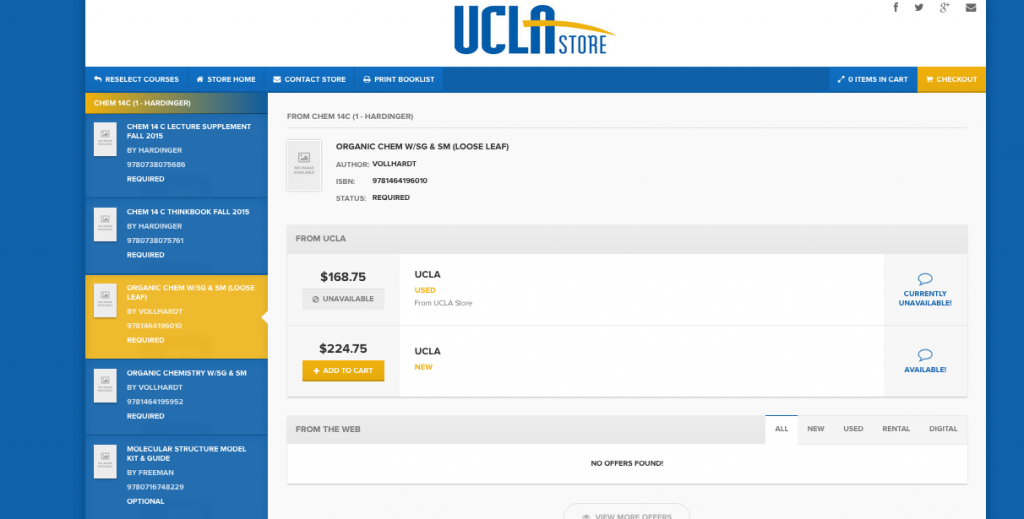
Thanks for including SlugBooks in your article!
Unless the bookstore is showing the price comparisons alongside the prices in the store (please correct me if they are doing that), this feature will always feel like more of a gimmick than anything else. We’ve seen it implemented across the country, but never inside bookstores on the actual price tags. There’s not true price transparency when these prices are omitted at the place most customers access them. I totally recognize it would be AWFUL for business for the bookstore to show real-time comparison prices to students shopping in the store, but that begs the question – why go halfway?
This is classic price discrimination – sell to a minority of students who are price-sensitive at internet prices, and sell to the rest of the students (who may be price-sensitive, but don’t comparison shop for whatever reason) at the store’s retail prices.
David Miller
Founder/CEO
SlugBooks
A few days ago new McLaren F1 subsequent after earning 18,512$,,,this was my previous month’s paycheck ,and-a little over, 17k$ Last month ..3-5 h/r of work a day ..with extra open doors & weekly paychecks.. it’s realy the easiest work I have ever Do. I Joined This 7 months ago and now making over 87$, p/h.Learn More right Here
jc…..
➤➤
➤➤➤ http://GlobalSuperEmploymentVacanciesReportsWork/GetPaid/98$hourly…❦.❦.❦.❦.❦.❦.❦.❦.❦.❦.❦.❦.❦.❦.❦.❦.❦.❦.❦.❦.❦.❦.❦.❦.❦.❦.❦.❦.❦.❦.❦.❦.❦.❦.❦.❦.❦.❦
TUN is also a good site to compare prices- it includes all major online sellers like Amazon, Abe Books, Barnes and Noble, etc. http://www.tun.com/book
Hi there, I’m CEO at BIGWORDS. Thank you SO MUCH for the great article. I wanted to clarify your point about our interface.
If you are buying one book, the details page shows every price available – its at the bottom of your screen shot. But the power of BIGWORDS is when you are buying multiple books. You add them all to your cart (we call it a bookbag), and start the price comparison. Then, it runs through every permutation of books at every store, and for each combination, calculates the total price, including coupons and shipping. Ultimately, it shows you the cheapest *combination* of stores to buy your stuff at.
When you add one item to your cart and start price comparison, it does the same thing… but it isn’t as obvious.
When we show you the best combination of stores and items, if for any reason you don’t like one of the items we have selected, you simply click to “ignore this copy” and the system re-runs the whole comparison and comes up with the next cheapest combination of stores, skipping that one item. Sometimes, it will recommend different stores because of the way shipping and coupons work.
BIGWORDS always finds the cheapest combination of stores to get your books (and anything else) at, and gives you the power to hone in on exactly what you need with the options on the left panel.
One other thing we do that some people miss is the option to “consider buyback value”. This takes into consideration how much you can sell your book for at the end of the semester and compares it against the cost of renting.
Using our first recommendation, students at 4 year universities save an *average* of $1,000 per year on their textbooks.
Thank you VERY much for your indepth article. I hope this is helpful to someone.
Kindest Regards,
Jeff Sherwood
CEO BIGWORDS.com